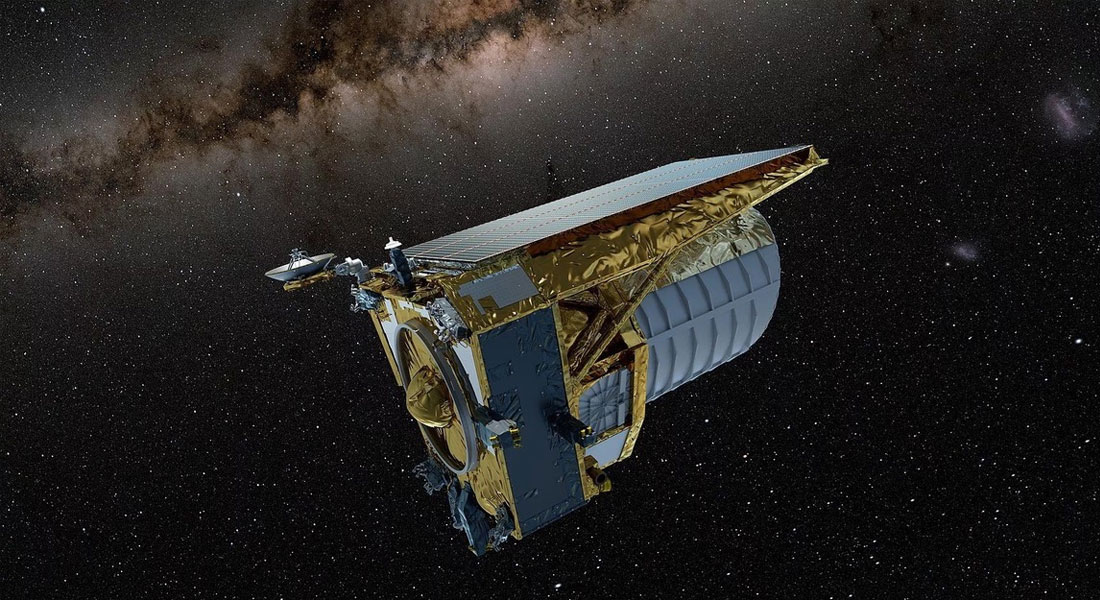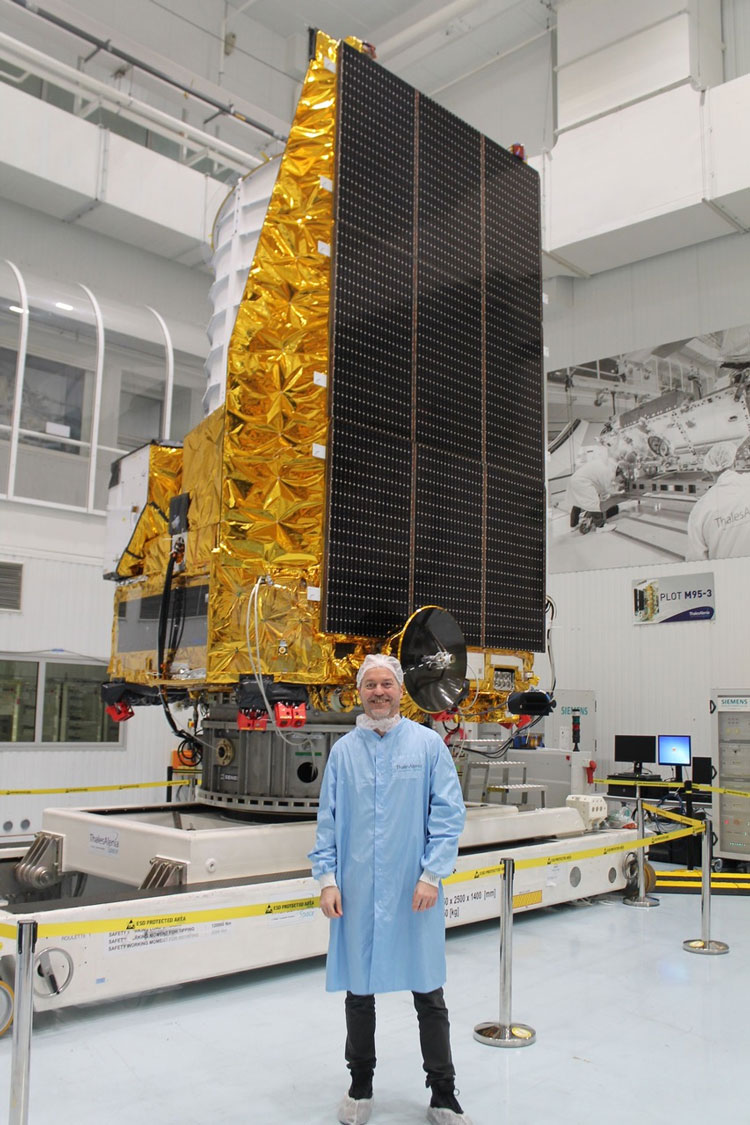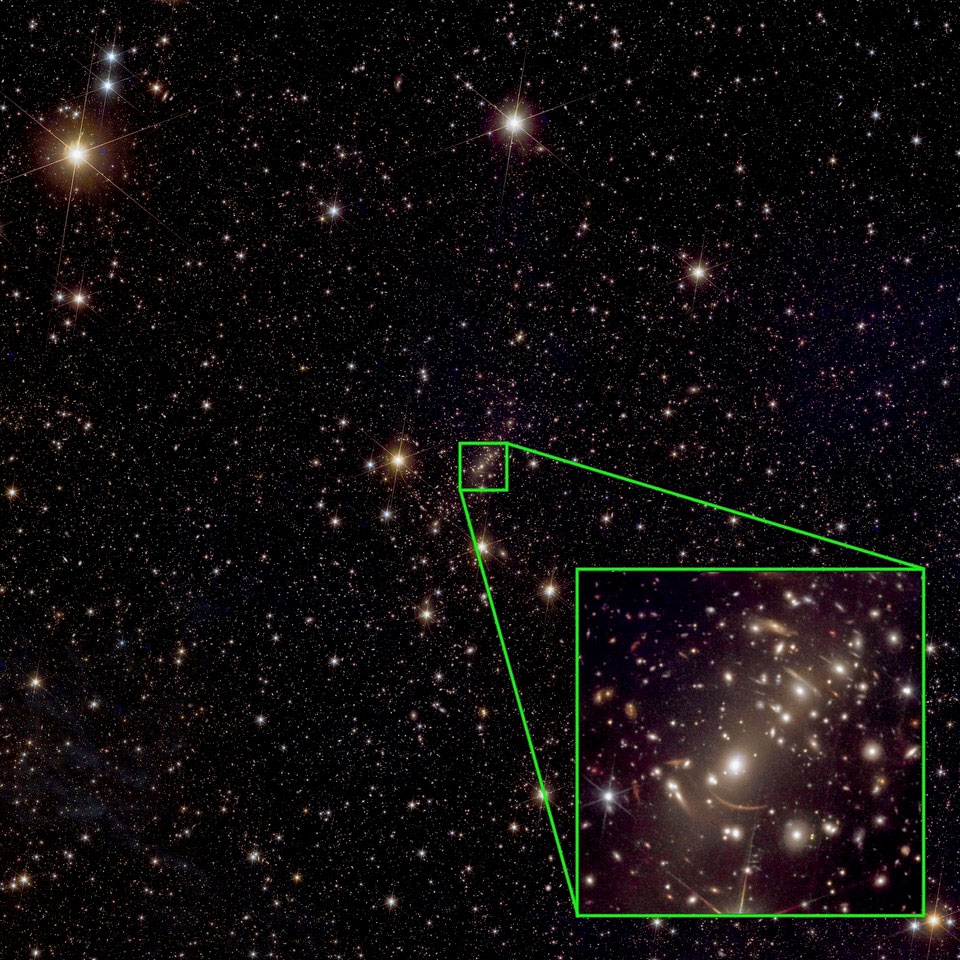First results from ESA’s space telescope Euclid
Today, the first scientific studies using data from ESA’s latest space telescope, Euclid, have been released. One of these studies, led by researchers at the Cosmic Dawn Center at the Niels Bohr Institute and DTU Space, utilizes the telescopes’ enormous field of view and infrared detectors to look for rare galaxies in the early Universe that are invisible in normal light. This work marks a first step toward a grand survey exploring the dawn of the cosmos.

Launched less than a year ago, ESA’s medium class space telescope Euclid has been its standard few decades underway and, being an ESA member, Denmark has been involved from the beginning.

This involvement really took hold in 2010, when researchers at the Niels Bohr Institute and DTU Space started building equipment to test the so-called “NISP”, one of two instruments carried onboard Euclid.
Efforts that included constructing a small, ultra-stable telescope simulator, a setup to measure the focus precision to 1/100 of a photon’s wavelength, and 30 trips to Marseille to conduct the tests at –120 °C in a hyperclean chamber.
From concept to science
And the meticulous tests paid off: In November last year, ESA released the first batch of stunning images from the telescope. And today the first ten scientific Early Release Observations — selected to showcase Euclid’s capabilities — are released.
One of these studies is led by John Weaver, a former PhD student at the Cosmic Dawn Center (DAWN) in Copenhagen and now a postdoc at the University of Massachusetts Amherst. This work presents a search for galaxies that are virtually invisible in “normal” light, such as red, green, and blue, only revealed by their infrared light.
With its unparalleled field of view, Euclid were able to cover two large galaxy clusters and their surroundings, finding more than half a million galaxies.
“Carefully inspecting all these sources, we identified 168 »invisible galaxies«,” John Weaver says. “Of these, 139 are either moderately distant galaxies that ceased to form new stars, so that only the old, reddish ones are left, or more distant galaxies full of cosmic dust which absorbs all light but the longest wavelengths, i.e. infrared.”
The remaining 29 galaxies, however, are invisible for another reason. These are rare, bright — and hence likely very massive — galaxies so distant that their light, having traveled through the Universe for 95% of its life, has been stretched out of the visible spectrum and into the infrared due to the expansion of the Universe.
Cosmic Dawn
The study by John Weaver lays the foundation for one of Euclid’s “Key Projects”, where thousands more of these distant, bright galaxies and extremely red sources will be unveiled. With ongoing and completed observational programs using both earth- and space-based telescopes, these observations comprise the “Cosmic Dawn Survey”, together scanning an area 100 times larger.

John Weaver’s PhD advisor, Sune Toft, a co-author and co-leader of the Cosmic Dawn Survey, as well as director of the Cosmic Dawn Center, is enthusiastic about the prospects:
“By scanning such a vast volume of space, the Cosmic Dawn Survey aims to understand how not only galaxies, but also their black holes and the dark matter halos in which they reside, evolved together through more than 95% of cosmic history,” Sune Toft comments.
The ten Early Release Observations have all been subject to the internal peer review process. Together with five papers describing the mission, instrumentation, and software, they are available at Euclid Consortium Publications, and will appear as pre-publications on the arXiv preprint server later today.
Contact
- Media
- Euclid Consortium press release: First science results and exclusive ERO data from the Euclid space telescope
- ESA press conference (live at 12:00, 23 May)
- John Weaver explaining the results on video
- Publications
- The Cosmic Dawn Center
- The Cosmic Dawn Survey
